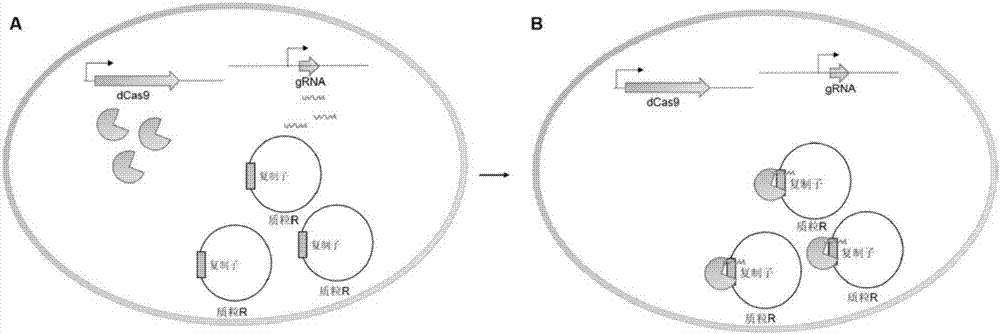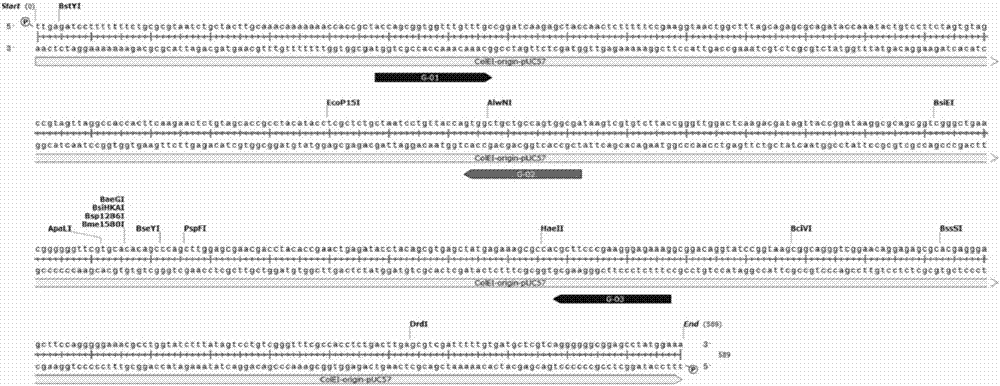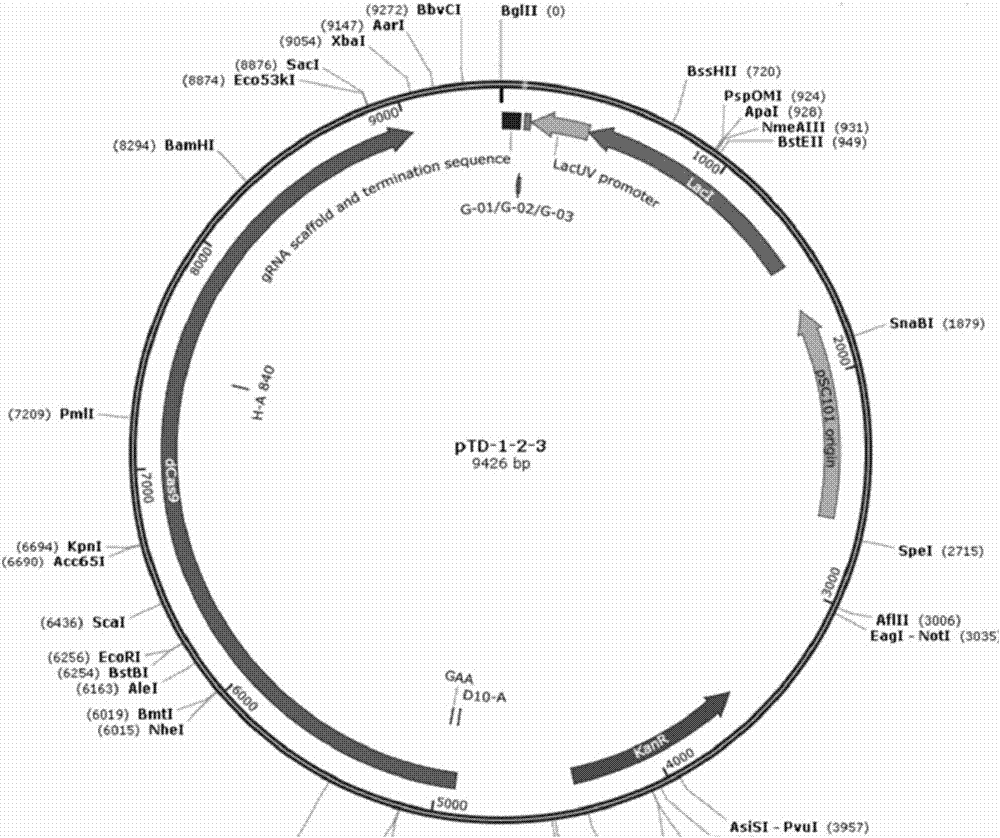Method for controlling plasmid replication in escherichia coli
A technology of Escherichia coli and plasmids, which is applied in the field of bioengineering, can solve the problems that cannot be well applied, single regulation mode, difficult to dynamically regulate the regulation of different abilities of plasmid replication, and achieve novel design, wide regulation range, and regulation powerful effect
- Summary
- Abstract
- Description
- Claims
- Application Information
AI Technical Summary
Problems solved by technology
Method used
Image
Examples
Embodiment 1
[0027] Example 1: Using the Crispr / Cas9 system to regulate the replication of a high-copy plasmid carrying a ColE1 type replicon
[0028] The purpose of this example is to construct a set of Crispr / Cas9 system to regulate the replication of a high-copy plasmid carrying a ColEI type replicon. The steps are as follows:
[0029] 1. For the ColEI type replicon region, design 3 different gRNA target sequences, named G-01 (accagcggtggtttgtttgc), G-02 (tcgccactggcagcagccac), G-03 (ctttctcccttcgggaagcg) (see attached figure 2 ), wherein the sequence adjacent to the 3' end of the target sequence is NGG. Wherein G-01 is located on the positive strand of the DNA in the replication region, and G-02 and G-03 are located on the negative strand of the DNA in the replication region.
[0030] 2. Aiming at the high-copy plasmid of the ColEI type replicon, design a plasmid expressing the Crispr / Cas9 regulatory system, which has the following characteristics: a. 1 temperature-sensitive replicon ...
PUM
 Login to View More
Login to View More Abstract
Description
Claims
Application Information
 Login to View More
Login to View More - R&D
- Intellectual Property
- Life Sciences
- Materials
- Tech Scout
- Unparalleled Data Quality
- Higher Quality Content
- 60% Fewer Hallucinations
Browse by: Latest US Patents, China's latest patents, Technical Efficacy Thesaurus, Application Domain, Technology Topic, Popular Technical Reports.
© 2025 PatSnap. All rights reserved.Legal|Privacy policy|Modern Slavery Act Transparency Statement|Sitemap|About US| Contact US: help@patsnap.com



